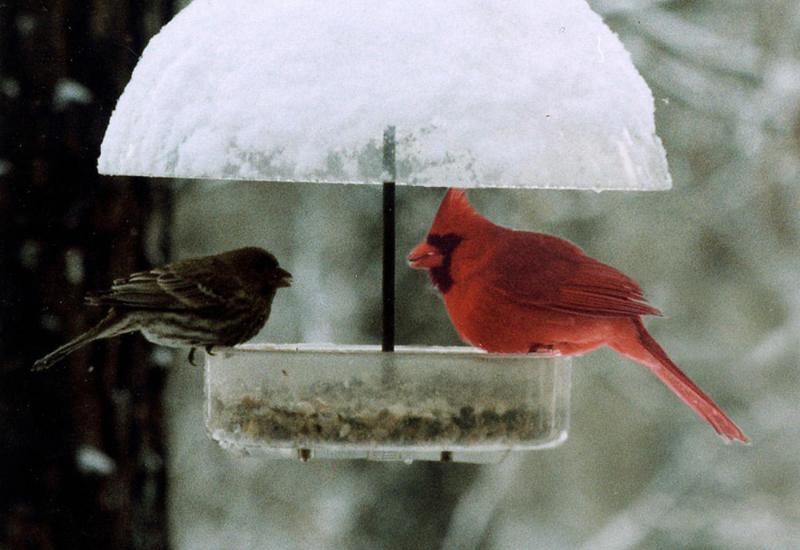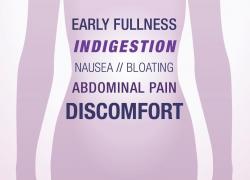Home
Entertainment
Health
(NewsUSA) - Chilly December air can make for an ideal time to get your fitness routine started. That’s because seasonal changes naturally affect our bodies and habits.
- Chilly December air can make for an ideal time to get your fitness routine started. That’s because seasonal changes naturally affect our bodies and habits.
While it may be a magical moment to set new health goals and improve your quality of life, it might seem easier said than done.
Adjusting eating habits, developing a workout plan, and staying motivated can be tough at any time—but you don’t have to do it alone. Working with a health coach can make the journey to better health more enjoyable and effective.
(The Obesity Society) - Obesity is a chronic disease affecting over 100 million Americans. Despite its prevalence and serious health consequences, widespread insurance barriers limit access to FDA-approved GLP-1 treatments.
- Obesity is a chronic disease affecting over 100 million Americans. Despite its prevalence and serious health consequences, widespread insurance barriers limit access to FDA-approved GLP-1 treatments.
(NewsUSA) - November is Prematurity Awareness Month, a time to focus on the more than 380,000 babies born too early in the U.S. each year. For families whose little one arrives weeks or months earlier than expected, understanding advances in premature infant nutrition can help reduce complications during the neonatal intensive care unit (NICU) journey.
- November is Prematurity Awareness Month, a time to focus on the more than 380,000 babies born too early in the U.S. each year. For families whose little one arrives weeks or months earlier than expected, understanding advances in premature infant nutrition can help reduce complications during the neonatal intensive care unit (NICU) journey.
Feeding Preemies Better
For the smallest, most fragile preemies, nutritional advances over the past two decades have dramatically improved health outcomes. Today, babies born as early as 22 weeks can not only survive, they can thrive.
(Mitch Jelniker) - Veterans face higher lung cancer risk from military exposures. Early screening and clinical trials save lives. Honor their service this month.
- Veterans face higher lung cancer risk from military exposures. Early screening and clinical trials save lives. Honor their service this month.
America’s heroes risked everything to protect our freedom, yet many remain unprotected from one of the deadliest threats they face at home: lung cancer. A simple, painless scan, a low-dose CT, can detect lung cancer early, when it’s most treatable. But despite its proven power to save lives, far too few Veterans are getting screened.
(NewsUSA) - As the holiday lights go up and the to-do lists grow, parents everywhere are navigating a season that should feel joyful, but all too often doesn’t. According to KinderCare Learning Companies 2025 Parent Confidence Index, six in ten parents surveyed say, “I feel overwhelmed by the demands of being a parent.”
- As the holiday lights go up and the to-do lists grow, parents everywhere are navigating a season that should feel joyful, but all too often doesn’t. According to KinderCare Learning Companies 2025 Parent Confidence Index, six in ten parents surveyed say, “I feel overwhelmed by the demands of being a parent.”
That’s a clear signal: parenting, even during the season of cheer, can feel like a pressure cooker.
(Diane Mulligan) - Small cell lung cancer (SCLC) is among the most aggressive, deadliest forms of lung cancer, yet it’s still too often overlooked. For decades, treatment options were limited, offering little hope to those diagnosed with SCLC, until now.
- Small cell lung cancer (SCLC) is among the most aggressive, deadliest forms of lung cancer, yet it’s still too often overlooked. For decades, treatment options were limited, offering little hope to those diagnosed with SCLC, until now.
Technology
Enviroment
(NewsUSA) - Violent weather events cause substantial loss of life and property damage throughout the world. Although we can’t control the weather, we can control how we prepare. Climate® Non-Slump (NS) Adhesive: A revolutionary product designed to help buildings better withstand extreme weather and earthquakes. When buildings survive, people survive.
- Violent weather events cause substantial loss of life and property damage throughout the world. Although we can’t control the weather, we can control how we prepare. Climate® Non-Slump (NS) Adhesive: A revolutionary product designed to help buildings better withstand extreme weather and earthquakes. When buildings survive, people survive.
Climate® NS, is a specialized high-performance structural adhesive designed to help buildings withstand seismic and violent-wind events. It functions as a shock absorber, increasing wall strength by up to 300 percent in light-frame-wood and panel-built structures.
(Michael Galavia, NewsUSA Reporter) - ProExpo Free Community Events will be organizing a LivingWell Senior Expo - Durango Hills YMCA - Friday, March 29, 202 from 10:00am -1:00 pm at Durango Hills Community Center, 3521 North Durango Drive, Las Vegas, NV 89129, USA.
- ProExpo Free Community Events will be organizing a LivingWell Senior Expo - Durango Hills YMCA - Friday, March 29, 202 from 10:00am -1:00 pm at Durango Hills Community Center, 3521 North Durango Drive, Las Vegas, NV 89129, USA.
The event is free and open to those who belong in the senior community.
This in-person Expo will help the seniors to become more active and explore a variety of services that cover travel companies, home improvement, insurance, immunizations, and senior living options.
It is a good avenue for adults to promote Health and Wellness for themselves.
(NewsUSA) - Want an easy way to add fresh vegetables and herbs to your diet? Indoor hydroponic grower systems are a great way to eat more healthfully. The advanced technology in today’s systems makes it simple and satisfying to grow a garden at home even if you don’t have a green thumb—you don’t even need a yard.
- Want an easy way to add fresh vegetables and herbs to your diet? Indoor hydroponic grower systems are a great way to eat more healthfully. The advanced technology in today’s systems makes it simple and satisfying to grow a garden at home even if you don’t have a green thumb—you don’t even need a yard.
(Cole's) - It’s an age-old question -- to feed or not to feed birds in fall and winter. Some people believe that feeding wild birds can cause more harm than good, like preventing timely migrations, or causing birds to depend on feeders rather than foraging food. The truth is these are myths and feeding birds is beneficial to their well-being. Birds migrate regardless of seed in feeders. It’s estimated that wild birds only get 25 percent of food from feeders, the rest is naturally sourced, so full feeders don’t keep birds from migrating.
- It’s an age-old question -- to feed or not to feed birds in fall and winter. Some people believe that feeding wild birds can cause more harm than good, like preventing timely migrations, or causing birds to depend on feeders rather than foraging food. The truth is these are myths and feeding birds is beneficial to their well-being. Birds migrate regardless of seed in feeders. It’s estimated that wild birds only get 25 percent of food from feeders, the rest is naturally sourced, so full feeders don’t keep birds from migrating.
(NewsUSA) - The laundry industry would have you believe that in order to get brilliant, clean laundry, you need to use powders, liquids and pods that are diluted with water, and come in bulky, single-use plastic containers. However, according to the EPA (Environmental Protection Agency), plastic waste is en route to overtake fossil fuels as the leading environmental pollution by 2030.
- The laundry industry would have you believe that in order to get brilliant, clean laundry, you need to use powders, liquids and pods that are diluted with water, and come in bulky, single-use plastic containers. However, according to the EPA (Environmental Protection Agency), plastic waste is en route to overtake fossil fuels as the leading environmental pollution by 2030.
According to The Ellen MacArthur Foundation, there will be more plastic than fish in the oceans by 2050, making this the best time to consider a more sustainable laundry routine.
Compare that hectic routine to those memorable moments when you're able to sit quietly, let the sunshine warm your face, hear the birds, and allow nature to envelope you. While everyone longs for less stress, actually relaxing can be dauntingly stressful!
However, a new study out of the United Kingdom sheds light on one way people can de-stress: bird watching. The study finds that people who watch birds from their home have lower depression, anxiety, and stress compared to those that live in less leafy areas that have fewer birds. People "felt relaxed and connected to nature when they watched birds in their garden," researchers say. These feelings increased with the level of bird feeding in the yard, they add.
Each year, approximately 30,000 cases of Lyme disease are reported to the CDC by state health departments, but this number doesn't reflect all diagnosed cases of Lyme disease. Recent estimates suggest that approximately 300,000 people may get Lyme disease each year in the United States.
New data reported by the CDC in 2018 showed that state and local health departments reported more cases of tick-borne diseases in 2017 than ever before, including Lyme disease. While the uptick in ticks remains unclear, a number of factors can affect tick populations, including temperature, rainfall, humidity, and most certainly, host populations, like deer.




































































